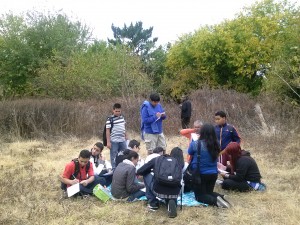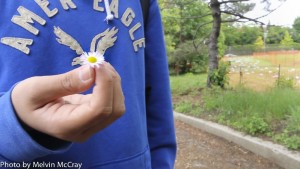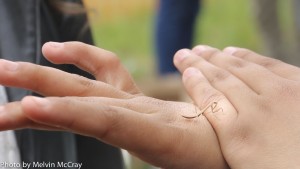 For a child growing up in the city, nature is often seen as a foreign or even scary thing. Without access to green space and natural environments, children can fail to form the bond with nature that we as humans often find essential to our existence. As TKF Foundation partner Naval Cemetery Landscape, part of the Brooklyn Greenway Initiative, works to restore and revitalize a section of the Brooklyn Navy Yard and cemetery grounds, they are also researching the impact of nature upon children with limited connection to nature.
For a child growing up in the city, nature is often seen as a foreign or even scary thing. Without access to green space and natural environments, children can fail to form the bond with nature that we as humans often find essential to our existence. As TKF Foundation partner Naval Cemetery Landscape, part of the Brooklyn Greenway Initiative, works to restore and revitalize a section of the Brooklyn Navy Yard and cemetery grounds, they are also researching the impact of nature upon children with limited connection to nature.
According to Pamela Ito, Director of Education with The Horticultural Society of New York — another partner in the project, over the past two years they have brought around 100 children from The Green School of Brooklyn to the Naval Cemetery Landscape and other nearby nature environments in the area. Along with helping with the development of the site, the students are getting hands-on experience to go with lessons taught in the classroom.
Ito said that one of the first steps in their research was to survey the children to get a sense of their feelings about green space and nature. When asked questions such as, “Do you like spending time outside” and, “Do you like insects,” Ito said that a large majority of the students gave a negative response. Nintey-percent of the students said that they felt they had no plant knowledge worth sharing.

When asked to give three words to describe their feelings about the site, one student answered, “Dead people, nasty, graveyard.”
“They had no experience, no connection to nature and some were even angry when we first brought them to a former gravesite,” Ito said adding that the students were surprised that it wasn’t already a beautiful space. At the time the site was little more than a large, overgrown area blocked in by invasive trees. This lead to a discussion about the potential of the site and what the site could become. They also talked about the sacred aspect of a former cemetery site and the types of plants that would and wouldn’t work on the site.
The second time the students returned to the site, things had changed. Many of the invasive trees had been removed and the clearing for a raised boardwalk was beginning to take shape through the site. Ito said that as the students began to see the transformation of the site, they started to ‘get it’. The students started to see the site aesthetically and recognize beneficial aspects of the environment as they learned about pollinators and the cooling impact of urban trees and grasses on the city.

According to Ito, the Naval Cemetery Landscape is much different than the city parks the children know. Unlike the play spaces in their neighborhood, this site is not an asphalt hardscape where they can frolic and play, but a place for reflection and restoration of spirit. “It is a beautiful, huge, untouched area much different than the parks they know,” Ito said.
As the site develops, it will become a living laboratory for the students as they study the soil, hydrology and biology. The students are also becoming familiar with aspects of landscape design as they learn how to identify plantings, all of which are native to this area of New York, why they were chosen for the site and how they will change with the seasons and over time.
Although early in the study, researchers hope to quantify the impact of natural environments on the students participating in the project. Research driven data will be the key to bringing more projects like the Naval Cemetery Landscape to fruition.
